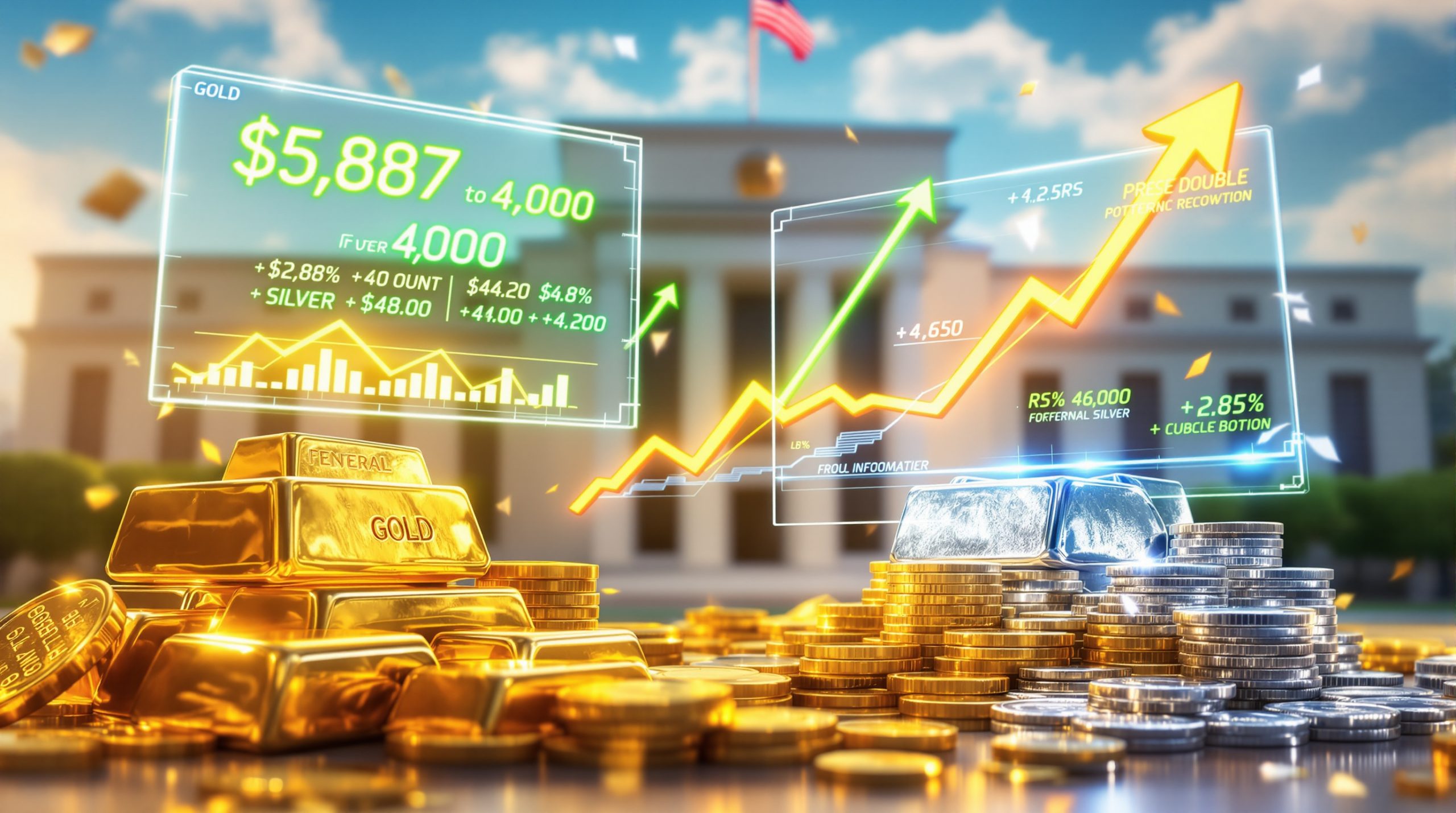What Is the Lithium Supply and Battery Raw Materials Conference in Las Vegas?
The Lithium Supply and Battery Raw Materials Conference is a premier industry event hosted annually by Fastmarkets, bringing together key stakeholders across the global battery supply chain. The 2025 conference, held in Las Vegas from June 23-26, served as a critical forum for discussing the most pressing issues facing the lithium industry, including supply chain dynamics, market forecasts, and strategic opportunities.
This specialized gathering attracts a diverse mix of participants, including mining executives, battery manufacturers, automotive industry representatives, technology providers, investors, and policy experts. The conference has established itself as a bellwether event where industry trends are identified and strategic relationships are formed.
Conference Overview and Significance
Fastmarkets, a leading cross-commodity price reporting agency with expertise in battery materials markets, organizes this influential conference. The event's significance stems from its timing during a critical period of transition in the global energy landscape, with electric vehicle adoption accelerating and energy storage deployments expanding worldwide.
The conference program typically features:
- Expert panel discussions on supply chain dynamics
- Technical presentations on extraction technologies
- Market outlook sessions from leading analysts
- Policy forums with government representatives
- Networking opportunities with key decision-makers
As Ewan Thomson of Fastmarkets noted in his conference summary, "The 2025 Fastmarkets Lithium Conference highlighted critical issues shaping the battery supply chain, including lithium oversupply, funding struggles and the need for midstream investment."
The event's location in Las Vegas positions it at the crossroads of North American lithium development, particularly as U.S. projects in Nevada and Arkansas gain momentum in the race to establish domestic supply chains independent from Chinese dominance.
Why Are Western Policies Critical for Lithium Industry Success?
Western nations face significant challenges in developing competitive lithium industries, with policy frameworks playing a decisive role in their ability to challenge China's dominance. The conference highlighted how inconsistent or short-term approaches have hampered Western development compared to China's strategic vision spanning decades.
Joe Lowry, president of Global Lithium and a respected industry analyst, succinctly captured this challenge: "If you want to play the game, you have to have a policy that allows you to play the game." This statement underscores how regulatory frameworks directly impact investment flows, project timelines, and strategic partnerships in the lithium sector.
Policy Challenges Facing Western Nations
Western governments have struggled to implement cohesive strategies that balance multiple competing priorities:
- Regulatory inconsistency: Fluctuating policies across electoral cycles create investor uncertainty
- Permitting delays: Environmental reviews often extend for years, delaying critical projects
- Investment barriers: Restrictions on foreign capital limit funding options
- Strategic planning gaps: Lack of coordinated national strategies for critical minerals
- Technology support: Insufficient R&D funding for innovative extraction methods
These challenges stand in stark contrast to China's approach, which features centralized planning, streamlined permitting, and substantial state financial backing for strategic industries.
Expert Perspectives on Policy Requirements
Industry leaders at the conference outlined several policy imperatives for Western nations seeking to compete effectively:
- Long-term vision: Policies must transcend election cycles to provide stability
- Permitting reform: Streamlined processes while maintaining environmental standards
- Financial incentives: Tax credits, grants, and loan guarantees for domestic production
- Strategic partnerships: Government facilitation of industry collaboration
- Infrastructure investment: Support for processing facilities and transportation networks
Iggy Tan, Executive Chair of Lithium Universe, highlighted additional policy complexities, noting: "We've got a project in Canada that must ensure no Chinese investment." This illustrates how Western nations increasingly impose restrictions on Chinese involvement in critical minerals projects, creating additional hurdles for project development.
Policy experts at the conference emphasized that successful lithium strategies require balancing security concerns with practical industry needs, avoiding overly restrictive approaches that stifle development while still protecting strategic interests.
How Has China Dominated the Lithium Supply Chain?
China's early recognition of energy storage as a strategic sector has positioned it as the dominant force in the global lithium-ion battery supply chain. This foresight, coupled with comprehensive government support, has given Chinese companies commanding positions across the entire value chain from mining to manufacturing.
According to Joe Lowry, China identified energy as a strategic industry long before Western competitors recognized its importance. This early mover advantage has translated into controlling approximately 65% of global lithium refining capacity and establishing a near-monopoly in certain battery components.
China's Strategic Approach
China's lithium dominance stems from a multi-faceted strategy implemented over two decades:
- Environmental imperatives: As Iggy Tan explained, "China's initial push to develop its battery industry was driven by the need to reduce urban pollution" – a pressing domestic concern that catalyzed government action
- Comprehensive policy framework: Integration of industrial policy, environmental regulations, and economic incentives
- Global resource acquisition: Strategic investments in lithium assets across South America, Australia, and Africa
- Vertical integration: Development of capabilities across the entire supply chain
- Technology transfer: Acquiring and improving Western technologies through joint ventures
- Domestic market creation: Subsidies and mandates for electric vehicle adoption
This holistic approach has created a self-reinforcing ecosystem that continues to strengthen China's competitive position.
Funding and Investment Strategies
The financial backing for China's lithium strategy has been equally comprehensive:
- State-directed capital: Government funds channeled to strategic industries
- Banking support: As Howard Margulis of MaxEn Capital Advisors highlighted, "Chinese banks and government support have been crucial in funding the sector, including projects outside China"
- Patient capital: Long-term investment horizon allowing for technology development
- Risk tolerance: Willingness to invest in early-stage technologies and regions
- Overseas investments: Strategic acquisitions of foreign lithium assets and technology
This financing ecosystem has enabled Chinese companies to weather market volatility while continuing to expand capacity and capabilities, creating a formidable advantage over Western competitors subject to stricter return requirements and shorter investment horizons.
What Opportunities Exist for North American Lithium Development?
Despite China's head start, the conference highlighted significant opportunities for North American lithium development, particularly in leveraging domestic resources and technological innovation. The United States and Canada possess substantial lithium reserves that remain largely undeveloped, presenting opportunities to establish regional supply chains.
Joe Lowry specifically identified the Arkansas Smackover formation as "an excellent opportunity for domestic lithium production." This region has emerged as a promising frontier for North American lithium, with several companies advancing projects following recent regulatory approvals.
Key North American Opportunities
North America possesses several distinct advantages in the race to develop lithium resources:
- Diverse resource types: Hard rock, clay, and brine deposits providing supply flexibility
- Existing industrial expertise: Oil and gas knowledge transferable to lithium brine extraction
- Strong innovation ecosystem: Research institutions supporting technology development
- Growing domestic demand: Expanding EV manufacturing creating local markets
- Supportive policy shifts: Inflation Reduction Act providing financial incentives
- ESG advantages: Higher environmental and labor standards compared to some competitors
These factors create a foundation for building competitive North American lithium operations, though challenges in permitting and financing remain.
Emerging Projects and Developments
Several promising developments are reshaping North America's lithium landscape:
- Arkansas brine projects: As reported by Grace Asenov, "Producers in Arkansas' Smackover Formation are advancing lithium extraction projects following recent regulatory approvals. Supported by oil and gas expertise and state incentives, the region is positioning itself as a key player in the US lithium supply chain."
- Nevada clay deposits: Companies developing novel extraction technologies for lithium-bearing clays
- Quebec hard rock mining: Traditional spodumene mining operations expanding production
- California geothermal lithium extraction: Projects extracting lithium from geothermal power plant brines
- Direct lithium extraction boost: New technologies enabling more efficient recovery from brines
These diverse approaches reflect North America's strategy of leveraging regional advantages rather than attempting to replicate China's model exactly. As Joe Lowry noted during the conference, the focus should be on building a distinctly North American ecosystem that capitalizes on local strengths.
The Arkansas Smackover formation represents a particularly promising opportunity, with companies leveraging existing oil and gas infrastructure and expertise to extract lithium from deep brines. Recent regulatory approvals for royalty structures have cleared important hurdles for these projects.
Is Cooperation with China Necessary for Western Success?
A central theme of the conference was whether Western nations should compete with or cooperate with China in lithium development. Industry experts offered nuanced perspectives on finding the right balance between independence and collaboration in a global market where China controls much of the downstream processing capacity.
Howard Margulis of MaxEn Capital Advisors provided perhaps the most pragmatic assessment: "No one can think we [in the West] can do it all ourselves without the Asian manufacturing machine." This recognition of China's established manufacturing capabilities suggests some level of cooperation remains necessary, at least in the near term.
The Case for Collaboration
Several factors make cooperation with China potentially beneficial:
- Manufacturing scale: China's established battery gigafactories provide immediate production capacity
- Technical expertise: Decades of operational experience in lithium refining and battery production
- Supply chain integration: Access to component suppliers and manufacturing ecosystems
- Market access: Entry into the world's largest electric vehicle market
- Capital efficiency: Leveraging existing facilities rather than duplicating infrastructure
Iggy Tan suggested that joint ventures and learning from Chinese technology could benefit Western companies, provided intellectual property concerns can be addressed. This pragmatic approach recognizes the reality of China's current dominance while seeking to gradually build Western capabilities.
Balancing Competition and Cooperation
The conference discussions revealed several strategies for achieving an optimal balance:
- Strategic independence: Developing domestic capabilities in the most critical technologies
- Selective partnerships: Collaborating in specific areas while maintaining control of core IP
- Diversified supply chains: Cultivating multiple sources to reduce concentration risk
- Technology exchange: Structured agreements that protect intellectual property
- Policy guardrails: Government oversight of partnerships in strategic sectors
The ideal approach likely involves pragmatic cooperation in the near term while building toward greater self-sufficiency in the long term. This nuanced strategy recognizes both the reality of China's current dominance and the strategic imperative of developing independent Western capabilities.
The regulatory landscape adds complexity to this balancing act, with restrictions on Chinese investment in critical minerals projects in countries like Canada creating additional hurdles for potential partnerships. These restrictions reflect growing concern about strategic dependence on China but may limit access to capital and expertise.
What Challenges Face the Battery Recycling Industry?
The conference highlighted significant pressures facing battery recyclers, with market conditions and policy uncertainties creating a challenging environment for this emerging sector. Despite the theoretical promise of "urban mining" through recycling, practical economic and technical hurdles have hampered industry development.
According to Kirstyn Petrass of Fastmarkets, "Battery recyclers remain under pressure, with tight margins among black mass producers and refiners amid a host of challenges for the industry." This assessment reflects the complex reality facing companies attempting to close the loop in the battery-grade refinery innovation supply chain.
Current Market Pressures
Battery recyclers face multiple headwinds in the current market environment:
- Supply-demand imbalance: Recycling capacity exceeding available end-of-life batteries
- Tight margins: High processing costs relative to material recovery value
- Price volatility: Fluctuating commodity prices affecting economic models
- Collection inefficiencies: Fragmented systems for gathering used batteries
- Quality inconsistency: Variable composition of recovered materials
- Technology maturation: Ongoing refinement of hydrometallurgical processes
This combination of factors has created financial pressure across the recycling value chain, with many companies struggling to achieve profitability despite the environmental benefits of their operations.
Policy and Regulatory Factors
The regulatory landscape significantly impacts recycling economics:
- Policy uncertainty: Evolving frameworks for extended producer responsibility
- Inconsistent standards: Varying requirements across jurisdictions
- Permitting challenges: Complex approval processes for recycling facilities
- Incentive gaps: Limited financial support compared to primary production
- Transportation regulations: Restrictions on moving used batteries across borders
- Battery passport systems: Emerging traceability requirements in Europe
Industry participants at the conference called for more cohesive policy frameworks to support recycling development, including streamlined permitting, consistent collection standards, and financial incentives that recognize the environmental benefits of materials recovery.
The challenges facing recyclers are particularly significant given the strategic importance of recycling in reducing dependence on primary materials and establishing circular supply chains. As battery deployments accelerate globally, developing efficient recycling systems becomes increasingly critical for both environmental and strategic reasons.
How Are Global Lithium Market Conditions Evolving?
Conference discussions revealed significant shifts in lithium market dynamics, with supply-demand balances changing and new challenges emerging for producers and consumers. The lithium supply and battery raw materials conference in las vegas provided a comprehensive view of how the industry is transitioning from a period of shortage and high prices to one of potential oversupply, creating complications for project developers seeking financing.
As reported by Ewan Thomson in his conference summary, key trends include "lithium oversupply, funding struggles and the need for midstream investment." These factors are reshaping industry strategy and investment patterns across the supply chain.
Current Market Trends
Several important developments are influencing current market conditions:
- Supply expansion: Multiple projects coming online simultaneously after being initiated during high-price periods
- Price normalization: Downward trend in lithium prices affecting project economics
- Quality differentiation: Growing importance of product specifications and consistency
- Regional disparities: Price variations between Chinese domestic and international markets
- Inventory accumulation: Strategic stockpiling by battery manufacturers
- Contracting evolution: Shift toward longer-term agreements with price floors
These trends create a challenging environment for project developers, who must navigate volatile pricing while securing capital for long-term investments. As one panelist noted, "The projects that will succeed are those with robust economics that can withstand price cycles, not just those that looked good during peak pricing."
Investment Landscape
The changing market has significantly impacted investment patterns:
- Funding selectivity: Investors becoming more discriminating about project quality
- Midstream focus: Recognition of processing and refining as critical bottlenecks
- Strategic partnerships: Increasing involvement of automotive and battery manufacturers in upstream projects
- Risk assessment: Greater scrutiny of technical, political, and market risks
- Capital structure innovation: Exploration of alternative financing mechanisms
- Consolidation pressures: Merger and acquisition activity among smaller players
Conference speakers emphasized that the industry is entering a phase of consolidation and maturation, with market forces driving efficiency improvements and favoring low-cost producers with strong technical capabilities and strategic partnerships.
The evolution toward a more mature market is expected to continue, with sophisticated pricing mechanisms, improved risk management tools, and greater transparency gradually developing. This maturation process, while challenging for some participants, should ultimately create a more stable and efficient supply chain.
What Future Developments Will Shape the Lithium Industry?
Looking ahead, conference speakers identified several key trends and developments likely to shape the lithium and battery materials landscape in coming years. These evolving factors will create both challenges and opportunities for industry participants across the supply chain.
The future outlook encompasses technological changes, market structure evolution, sustainability imperatives, and policy developments. Understanding these trends is essential for strategic positioning in this rapidly evolving industry.
Emerging Trends and Forecasts
Key developments expected to influence the industry include:
- Battery chemistry evolution: Shifts toward high-nickel, silicon anode, and solid-state technologies
- Processing innovations: New techniques for improving efficiency and reducing environmental impact
- Supply chain regionalization: Development of localized ecosystems in North America and Europe
- Resource nationalism: Increasing government intervention in critical minerals
- Sustainability focus: Growing importance of carbon footprint and water usage
- Market sophistication: Evolution of pricing mechanisms and risk management tools
These trends will reshape competitive dynamics, potentially creating advantages for companies that can anticipate and adapt to changing requirements. As one panelist noted, "The winners in this industry will be those who can see around corners and position themselves ahead of these transitions."
Strategic Considerations for Industry Participants
Conference experts outlined several strategic imperatives for companies navigating this evolving landscape:
- Flexibility: Designing operations and business models to adapt to changing conditions
- Technology focus: Continuous innovation in extraction, processing, and recycling
- Partnership strategy: Cultivating relationships across the value chain
- Sustainability leadership: Exceeding regulatory requirements to gain market advantage
- Policy engagement: Active participation in shaping evolving regulatory frameworks
- Capital discipline: Maintaining financial strength through market cycles
The lithium industry's rapid evolution requires companies to balance long-term strategic positioning with short-term operational excellence. Those who can navigate this complexity while maintaining a clear vision of future requirements will be best positioned for sustained success.
Industry leaders emphasized that while challenges persist, the fundamental demand growth driven by electrification creates a strong long-term outlook for lithium. The transition underway represents not just a supply chain shift but a fundamental restructuring of global energy systems with lithium at its core. Furthermore, understanding Argentine lithium insights and Australian lithium tax breaks will be crucial for companies seeking a competitive edge in this evolving landscape.
FAQ: Lithium Supply and Battery Materials Market
What were the key
Want to Stay Ahead of the Next Major Mineral Discovery?
Discover why significant mineral discoveries can lead to exceptional market returns by exploring Discovery Alert's dedicated discoveries page, powered by the proprietary Discovery IQ model that transforms complex mineral data into actionable insights. Begin your 30-day free trial today at https://discoveryalert.com.au/discoveries/ to gain a market-leading advantage.



